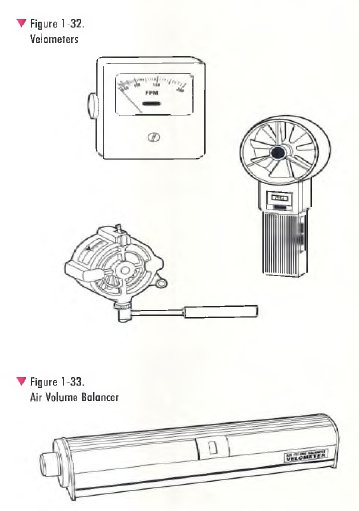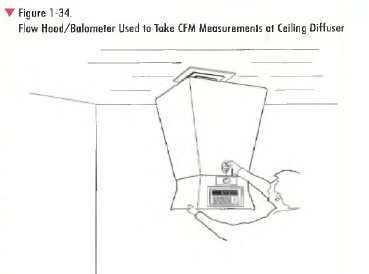Velometers (Figure 1-32) are used to measure the velocity of airflow. Like the anemometers described previously, velometers are used when evaluating the operation and/or balancing the airflow in air distribution systems. Velometers provide instantaneous, direct readings o f air velocity in FPM without the need for timing or calculations. Some can also provide direct readings in CFM.
Several analog and electronic types of velometers are in common use. Sensing probes used with the velometers have a sensitively-balanced vane or a small resistance heater element that when placed in the airstream produces a measurement of airflow for application to the velometer meter scale. Depending on the sensing probe or attachment used, velometers are available to measure air velocities in several ranges within the overall range o f 0 to 10,000 FPM. Certain electronic velometers use a microprocessor that can automatically average up to 250 individual readings taken across an area to provide the average air velocity and temperature. Some can also drive an optional micro-printer to record the readings.

Velometers like the one shown in Figure 1 -33 are often called air volume balancers. When balancing air distribution systems, this type of velometer is held against the grille to get a direct reading of air velocity in either FPM or CFM.
Another type of velometer, called a bolometer or flow hood (Figure 1-34), is frequently used to get direct velocity readings in CFM when measuring air output or when balancing commercial air distribution systems with large air diffusers.
